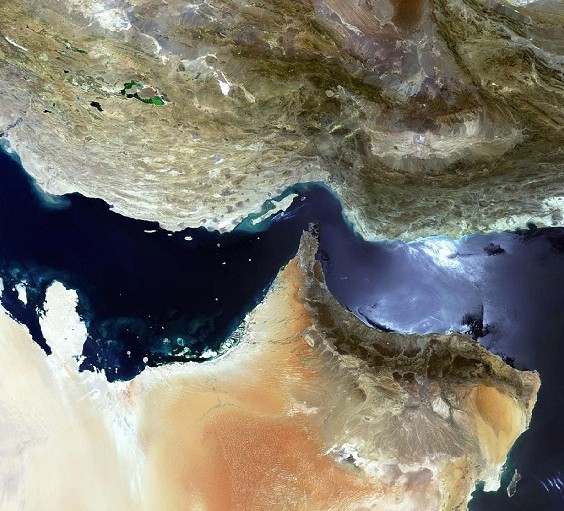Ukraine War Enters New Phase With Oil In The Crosshairs
By Daryna Krasnolutska (Bloomberg) Russia and Ukraine may have struggled to shift things significantly on the battlefield for more than 16 months, but a new phase of the war is moving...




WASHINGTON — As global leaders weigh Iran’s threat to block oil deliveries through the Strait of Hormuz, U.S. energy officials said Friday that more oil passed through the strategically located stretch of water in 2011 than in previous years and that any blockage of so-called chokepoints could lead to “substantial increases” in energy costs.
In data released Friday, the Energy Information Administration said an average of 17 million barrels of oil moved daily through the Strait this year, up from 15.5 million to 16 million barrels in 2009 and 2010. The Strait carried about 20% of all oil traded worldwide and about 35% of all seaborne-traded oil, EIA said.
Located between Oman and Iran, “Hormuz is the world’s most important oil chokepoint,” the EIA said on its web site.
The EIA released data on the Strait of Hormuz after Iran’s first vice president, Mohammad-Reza Rahimi, said Iran would block oil deliveries through the Strait if global powers imposed sanctions targeting his own country’s oil industry. Iran is the fourth largest oil producer in the world.
Oil currently trades at around $99 a barrel.
While experts say Iran is unlikely to actually close the Strait, in large part because such a move would damage its own economy, Iran is conducting a 10-day naval exercise in and around the waters of the Persian Gulf.
On Thursday, U.S. State Department spokeswoman Victoria Nuland said “the ratcheting up of pressure” on Iran “is pinching in a way that is causing them to lash out,” according to transcripts.
If the Strait of Hormuz were to close, oil deliveries could be rerouted via pipelines “at increased transportation costs,” the EIA said. Specifically, oil could be shipped via a 745-mile pipeline that stretches across Saudi Arabia from Abqaiq to the Red Sea. Oil could also be pumped north via pipeline to a port on the Mediterranean Sea.
At its narrowest point, the Strait of Hormuz is 21 miles wide, wide enough and deep enough to handle the largest oil tankers. In 2011, an average of 14 oil tankers moved through the Strait every day, with a corresponding number of empty tankers entering the Strait to pick up new shipments, the EIA said.
The vast majority of shipments moving through the Strait are bound for Asian markets, with the most popular destinations being Japan, India, South Korea and China.
The EIA typically publishes annual data on the Strait of Hormuz a few weeks after the new year. Iran’s threat to close the Strait prompted so many requests for data that the agency published it early, EIA expert Erik Kreil said.
-By Tennille Tracy, Dow Jones Newswires
Join the gCaptain Club for curated content, insider opinions, and vibrant community discussions.


Join the 105,881 members that receive our newsletter.
Have a news tip? Let us know.
Access exclusive insights, engage in vibrant discussions, and gain perspectives from our CEO.
Sign Up




Maritime and offshore news trusted by our 105,881 members delivered daily straight to your inbox.



Essential news coupled with the finest maritime content sourced from across the globe.
Sign Up